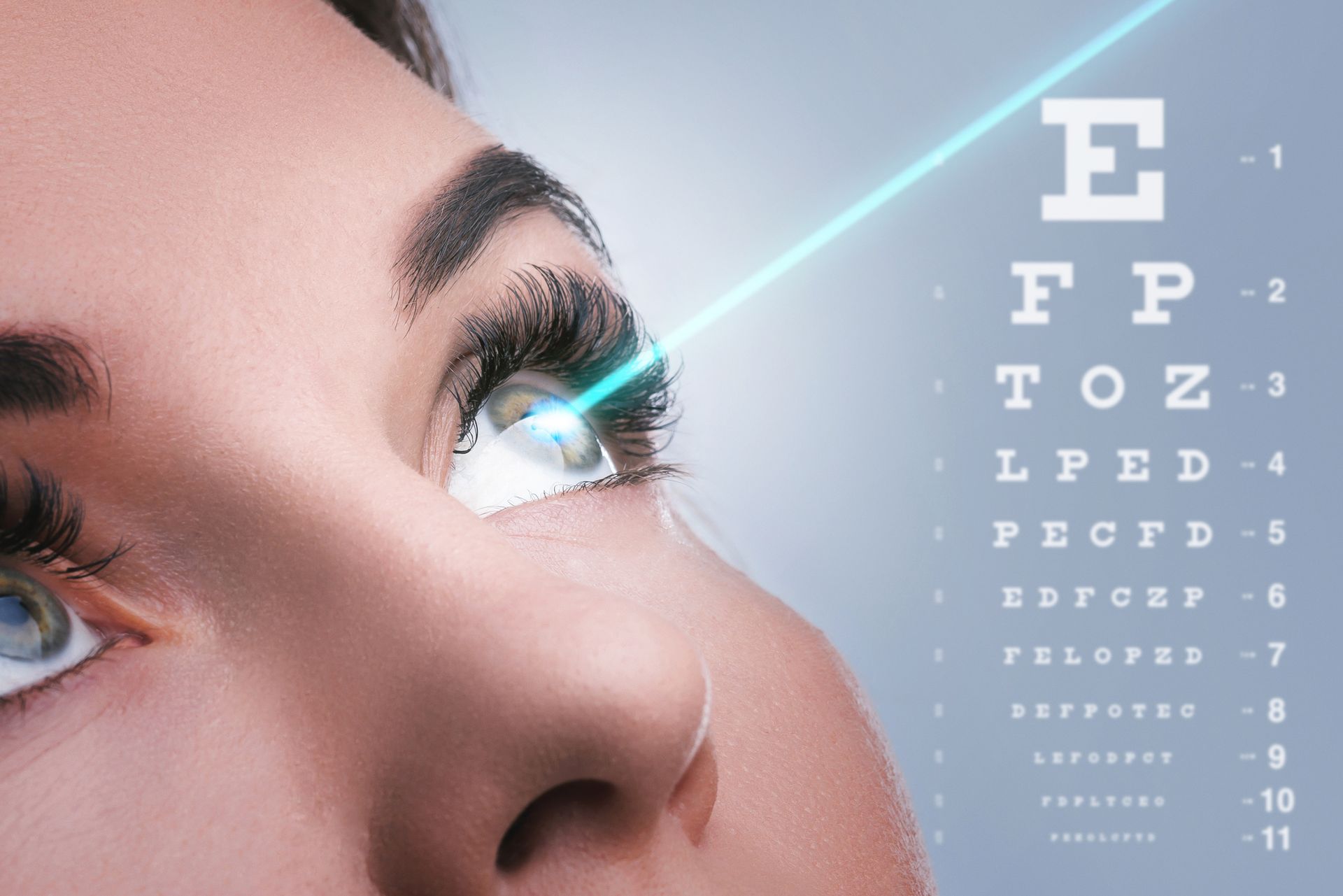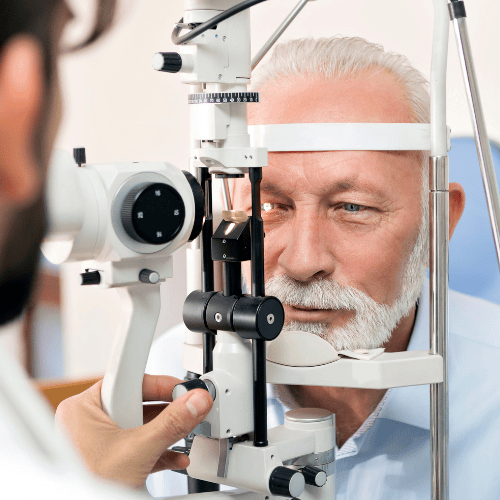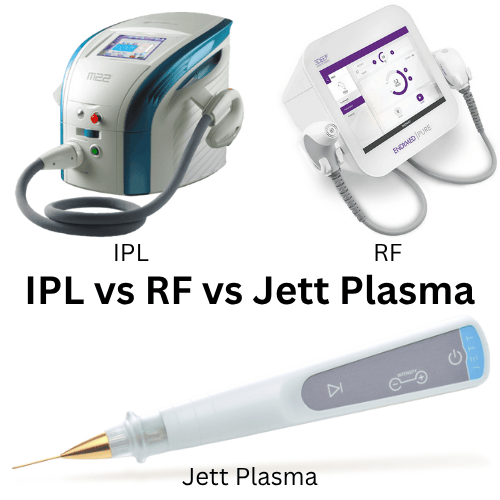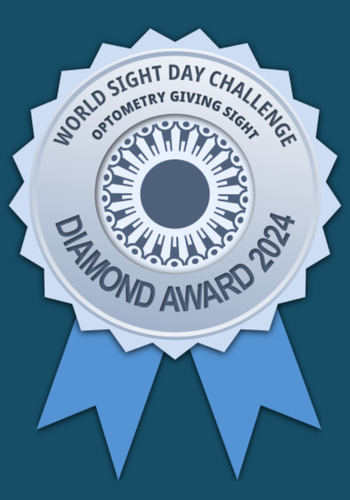HOW LASERS ARE USED IN VISION CARE
Lasers in eye and vision care have been used for many years for a variety of applications. Different types of lasers are used for different purposes, below we outline some of the most common ones.

Glaucoma
Glaucoma is a common eye disease affecting upwards of 700,000 Canadians. It results from damage to the optic nerve and is linked to high pressure within the eye. Known as the “silent thief of sight” it can gradually affect peripheral vision and lead to permanent vision loss if undetected and untreated.
Treatment of glaucoma often involves the use of eye drops – medicated prescriptions designed to improve the balance of pressure within the eyeball and reduce the progression of optic nerve damage. There are also two types of laser procedures that are used to manage glaucoma.
Peripheral Iridotomy
Certain types of glaucoma can benefit from a laser procedure known as Laser Peripheral Iridotomy (LPI). During an LPI, a laser is used to create a tiny hole in the iris. This allows fluid within the eye to transfer more freely from behind the iris, reducing the chance of an acute rise in eye pressure.
Watch this video for more information on LPI.
Selective Laser Trabeculoplasty
During a Selective Laser Trabeculoplasty (SLT) a laser is used to stimulate the tissue in the drainage area of the eyeball. In this area, fluid from within the eyeball drains out of the eye. In certain types of glaucoma, the efficiency of fluid drainage may be improved with the use of an SLT laser.
Watch this video for more information on SLT.
Cataracts
While lasers are increasingly being used during cataract surgery itself, a procedure called Laser Capsulotomy (LC) has been used for many years to manage a condition often encountered once the cataracts have been removed. During cataract surgery, the cloudy lens is removed from the eye and replaced with a clear implant made of silicon. Often, the silicon implant develops a film which can then be cleared using a Laser Capsulotomy.
Watch this video for more information on LC.
Laser Refractive Surgery
This is likely the most well-known application of lasers within eye care, and started to be used back in the 1980’s. People with refractive errors like myopia, hyperopia, and astigmatism can often benefit from laser refractive surgery to reduce their dependence on glasses.
Here are the most common forms of refractive laser surgery:
- LASIK (laser-assisted in-situ keratomileusis). A small flap is created within the cornea, and a laser used to change the shape of the tissue beneath. The flap is repositioned and the cornea heals quickly (usually one or two days).
- PRK (photorefractive keratectomy). This involves the removal of the topmost layer of the cornea before the tissue below is reshaped with a laser. Recovery time is longer than with LASIK (around a week or so).
- Wavefront-guided LASIK. Precision-mapping of the surface of the cornea is done to accurately create a customized procedure. Often this results in improved vision vs. the more traditional techniques.
Watch this video to learn more about the differences between LASIK and PRK.
Versions of these types of refractive procedures are now available. It’s important to find out if you are a good candidate for laser refractive surgery – see your MVO optometrist if you are interested in learning more about your specific options.
Reference:
https://opto.ca/eye-health-library/lasers-vision-care











